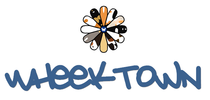Submit Photos of your Guinea Pigs
Wheektown is in the process of a major research project. One of the hurdles with this is gathering enough copyright-free photographs to make the encyclopaedias a visual and user-friendly guide. Everyone can help out with this by submitting photographs with permission to reproduce them in the books. Below is a list of all the photographs likely to be needed, so chances are you can contribute it many different ways already! Photos must be of a high quality and have little background noise (e.g. your fingers or other guinea pigs in the way). If the relevant feature does not encompass the whole photograph, then it must be of a high enough quality to allow cropping.
THIS FORM USED TO INCLUDE A SECTION FOR UPLOADING FILES. SINCE DOWNGRADING THE WEBSITE PLAN,
THIS OPTION IS UNAVAILABLE. Please email the photograph(s) instead, to [email protected]

